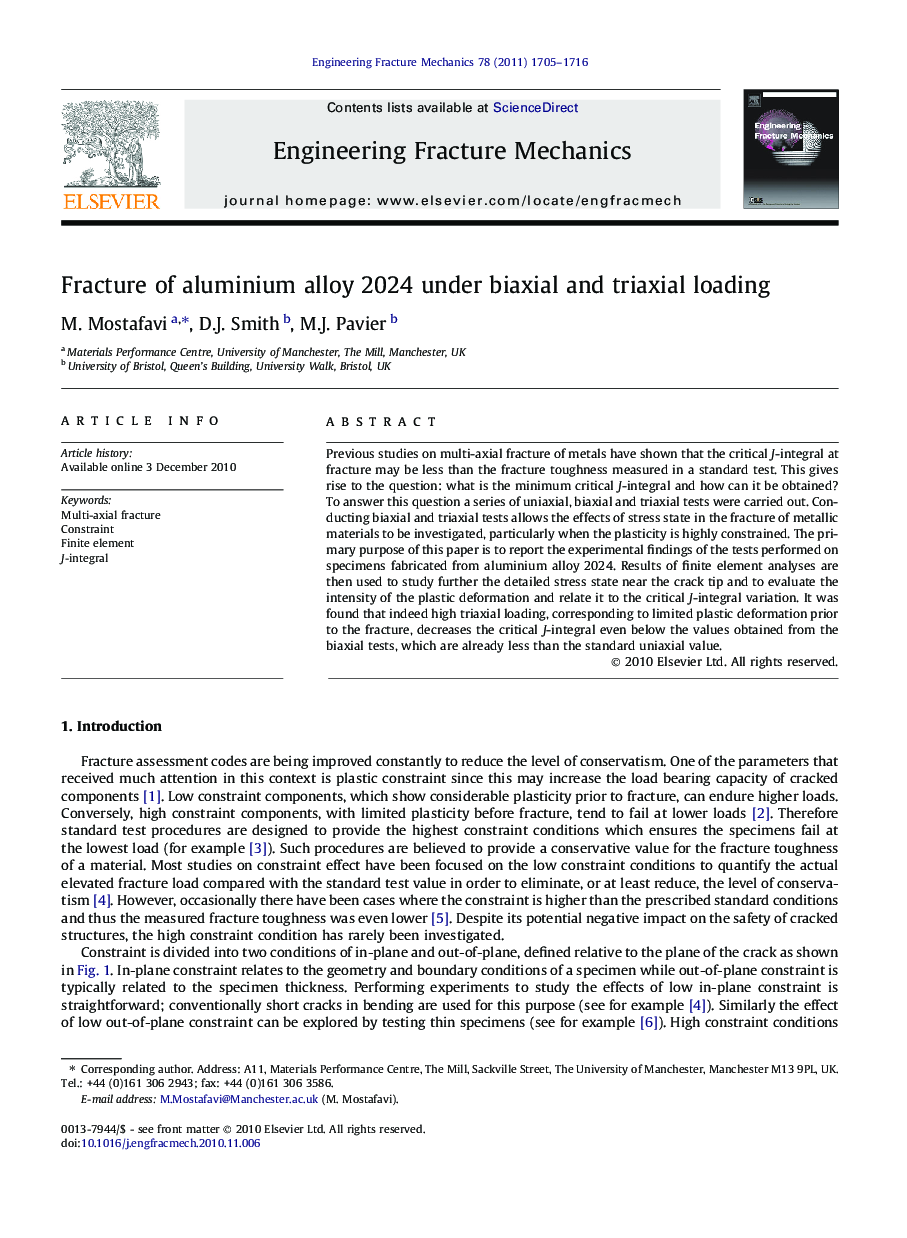| Article ID | Journal | Published Year | Pages | File Type |
|---|---|---|---|---|
| 771142 | Engineering Fracture Mechanics | 2011 | 12 Pages |
Previous studies on multi-axial fracture of metals have shown that the critical J-integral at fracture may be less than the fracture toughness measured in a standard test. This gives rise to the question: what is the minimum critical J-integral and how can it be obtained? To answer this question a series of uniaxial, biaxial and triaxial tests were carried out. Conducting biaxial and triaxial tests allows the effects of stress state in the fracture of metallic materials to be investigated, particularly when the plasticity is highly constrained. The primary purpose of this paper is to report the experimental findings of the tests performed on specimens fabricated from aluminium alloy 2024. Results of finite element analyses are then used to study further the detailed stress state near the crack tip and to evaluate the intensity of the plastic deformation and relate it to the critical J-integral variation. It was found that indeed high triaxial loading, corresponding to limited plastic deformation prior to the fracture, decreases the critical J-integral even below the values obtained from the biaxial tests, which are already less than the standard uniaxial value.
